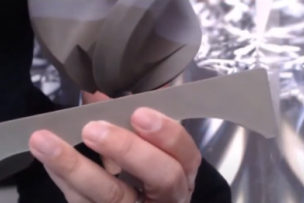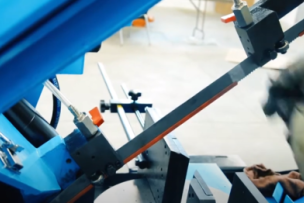Kennametal delivers productivity to customers seeking peak performance in demanding environments by providing innovative custom and standard wear-resistant solutions, enabled through our advanced materials sciences, application knowledge, and commitment to a sustainable environment.
The best and most efficient operating speeds for taps cannot be calculated with the same certainty, as for many other metalcutting tools. With other tools, the feed per revolution can be set at any desired point and can be varied as conditions demand. Taps, on the other hand, must always be advanced at a rate equal to one pitch for every revolution. The style of tap may vary the conditions. For example, with a bottoming tap, the first thread on each land cuts the full height of thread, while, with a taper or starting tap, a number of threads do their share of the cutting before the full height of thread is reached. The depth of thread also varies, depending on the pitch. The coarser the thread, the greater the advance of the tap per revolution and the greater the amount of material removed.
The method of feeding the tap, and the type of equipment for driving, also influences the permissible speeds. If taps are mechanically fed at the proper rate of advance, they can be operated at higher speeds than if they are required to feed themselves and pull some part of the machine along with them.
Speeds may be modified to take into account any or all of these factors:
- Speeds must be lowered as length of thread increases because, in deep thread holes, the accumulated chips increase friction and interfere with lubrication.
- Bottoming taps must be run slower than plug taps.
- Tapping full height of thread calls for slower speed than if the commercial 75% height only is required.
- Coarse-thread taps in the larger diameters should be run more slowly than fine-thread taps of the same diameters.
- The quantity and quality of cutting fluid may affect the permissible speeds as much as 100%.
- Taper threaded taps, such as pipe taps, should be operated from 1/2–3/4 the speed of a straight thread tap of comparable major diameter.





Talk to Us!
Leave a reply
Your email address will not be published. Required fields are marked *